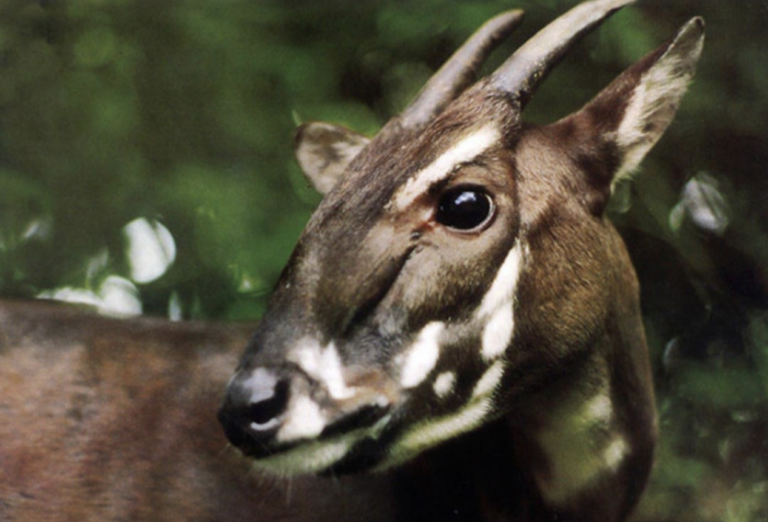Species in Peril:
Saolas

The mysterious Asian Unicorn
Rarest of large mammals
As one of the rarest animals in the world, Saola is characterized with its prominent white facial markings and long tapering horns. Saola’s singular beauty and reclusive habits in the wet forests give it an air of mystery, which make this species more charming for humans.
But also because of its mystery, people’s knowledge about Saolas is so limited and therefore, there is a huge challenge for Saola protection work.
First discovered in 1992
Three decades ago, in 1992, a strange skull was procured in a local hunter’s house by a vietnam forest survey team. This skull features a pair of long and pointed horns which unlike any animal then known from Southeast Asia. Later, the team found more sets of horns and proved that they belonged to a large mammal species first discovered in 50 years. The team described this animal as a bovid species and used the local language to give it a name, “Saola ”, which can be translated as “spindle” reflecting the size and shape of their horns. The scientific name for this species, “nghetinhensis” means “polite animals” because they move in the forest quietly. And in the press, people like to call Saolas the “Asian Unicorn”, which may link to the “Chinese Unicorn” Qilin, because of their unique appearances.
Another feature of Saolas is their rarity and exclusiveness. Until now, only about 10 Saolas are caught alive and all of them have died within a few months due to the lack of professional care. The last time the camera took an image of Saola in nature was 10 years ago. Most information we know about Saola was provided by local villagers, from their descriptions and a few photos, Saola has chocolate brown coats, a pair of long, gently curving horns, and a striking pattern of white markings on the head. They are usually in small groups of two or three and active in day as well as night. Until now, Saola is still an enigma for both the public and scientists.
A race against time
Because of the lack of information, it is impossible to estimate the population of Saola. Based on the only clues they have, scientists indicate that even in the best contiditon, the number of Saola would not be more than a few hundreds, and this number could be just tens. What’s worse, due to the rampant commercial poaching, habitat destruction and other human-related factors, the Saola population size is still decreasing day by day.
However, the good news is that there are already some people taking actions to save this amazing species. With the effort of the Saola Working Group (SWG), the Bach Ma National Park in Vietnam has been selected as the first breeding center for the saola in 2017. Although before bringing the animals into the center, finding them would be hard work, the establishment of the breeding center is still a significant advance for Saola protection.
A Few More Facts About Saolas
- The first World Saola Day is July 9, 2016.
- Saola is the ‘conservation flagship’ of a global biodiversity hotspot, the Annamite Mountains.
- Saola is one of the global top 50 Evolutionarily Distinct & Globally Endangered (EDGD) species.
- It was observed that the captive female saola was afraid of dogs.
- Saola is by far the largest terrestrial animal in the world that has never been seen in the wild by a biologist.
Species Name
Pseudoryx nghetinhensis
Estimated Population
Fewer than 100
Conservation Status
Critically endangered
Range
Laos, Vietnam
Reasons for Population Decline
Hunting
Habitat destruction
Poaching
Climate change


